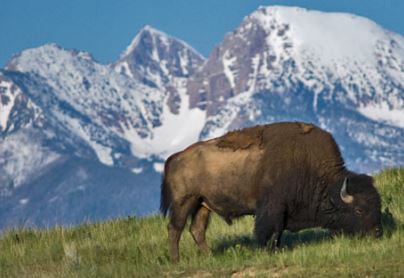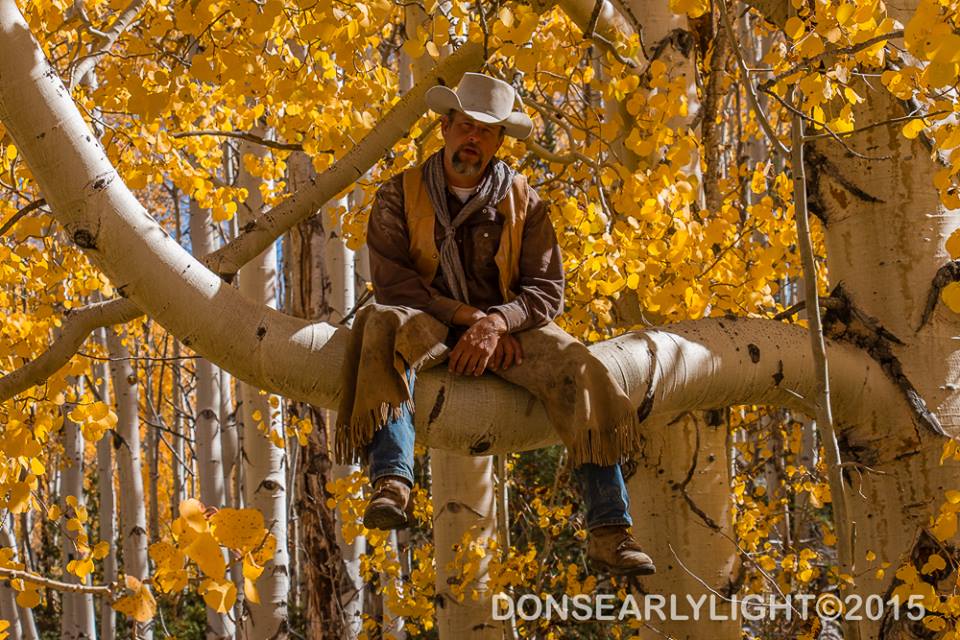Lava Lake Land & Livestock – The Fourth Dimension — by Todd Macfarlane
By now, it should be no secret that environmental conservation, and everything that goes with that, including sound resource stewardship, sustainability, etc., are very important to Lava Lake principals. In fact, an entirely separate entity, Lava Lake Institute for Science and Conservation, with its own separate staff, was created just to focus on these issues. Although Mike Stevens is the president, Tess O’Sullivan is the experienced program director, which reflects the reality that successful sheep ranching and marketing are not the ultimate ends that Lava Lake is seeking. They are really just part of the tools and means to the “end” objective that really drives the operation. With seed money provided by the Beans and the production operation, and matched by a wide variety of outside sources, the Lava Lake Institute leverages a tremendous amount of financial resource for local environmental initiatives, including conservation efforts headed up by O’Sullivan. But a big part of its mission isn’t just on-the-ground conservation efforts, it also includes proactive research, education, and collaboration, much of which has been very beneficial to the local ranching and livestock industries.
As mentioned previously, many environmental organizations and activists take a dim view of public lands grazing for example. In fact one well-known, well-funded and particularly aggressive group, Jon Marvel’s Western Watersheds Project, headquartered just two blocks away from Lava Lake’s own business office in Hailey, is very proactively seeking to end all public lands grazing. And Western Watersheds is not afraid to use litigation and other heavy handed tactics as tools to help reach its own objectives.
Lava Lake Institute, on the other hand, is actively educating about the environmental benefits of public land grazing and other multiple beneficial uses of renewable natural resources; including popular recreational activities like hunting, fishing, hiking and cross-country skiing, and providing research to back-up its positions. Unlike many environmental “preservation” groups that seek to limit land uses and exclude land users, Lava Lake takes a much more inclusive and collaborative approach.
One example of this is the fact that although Lava Lake does limit public hunting on part of its private land (the original 7000 acres that is covered by a conservation easement) the vast majority of its remaining 17000 acres in private land holdings is open to public hunting. The only restriction is that instead of throwing the gate wide open and putting up a big welcome sign for a wide variety of ATVs and off-road vehicles, access is limited to those hunting on foot or horseback.
Although we have already described some of Lava Lake’s general, environmentally friendly production methods, like regularly moving their camps and sheep bedding grounds, designed to reduce prolonged and/or repeated negative impacts on the same ground, one of Lava Lake’s biggest success stories is has resulted from its collaborative efforts. None of these has had a higher profile than the Wood River Wolf Project.
As might be expected, wolves are a very hot topic in the area, and a subject of major conflict and contention between most local ranchers and environmentalists. Wolf management is a very polarizing issue, perhaps more so than any other wildlife-related issue in North America. According to Mike Stevens, it is everyone’s favorite fight in the wildlife/endangered species protection arena.
Despite Lava Lake’s desire to protect its sheep from wolf predation – and make no mistake about it, Lava Lake’s sheep have as much potential as wolf targets as just about any ranching operation in the area – much to the chagrin of most other ranchers, Lava Lake started out with the idea that they wanted to make every reasonable effort to peacefully co-exist with wolves. To that end, Lava Lake was willing to sit down and collaborate with almost anyone to do that. Based on their overall approach, they felt like their endorsement of the use of lethal control would be a stain on their reputation in the area. In that whole evolving process, however, after first establishing credibility as a collaborative partner with both sides of the equation, as wolf populations have now gotten larger, and wolf predation is becoming a bigger issue on the ground in some cases, they are becoming more and more open-minded to limited lethal control options in some situations. In the meantime, they will continue to try to do everything short of that, including heightened human presence, which Stevens says is the most effective deterrent to wolves , as well as the use of even more guard dogs, and the use of electric fencing at night. Although Stevens says it would be nice to be able to have two herders with each band of sheep so that one could essentially act as a night guard, the economics of twice as much hired help just don’t work.
Consequently, one of the biggest success stories in this regard is the collaborative Wood River Wolf Project. This project focuses on certain packs of wolves in the Wood River drainage. Because of the credibility Lava Lake has established, one of the initiatives of the project is to provide volunteer “sheep security guards” when sheep are grazing in the biggest problem areas. The project creates a schedule and seeks volunteers to spend time and provide added human presence, especially at night, when Lava Lake sheep bands are grazing in those areas. This win/win approach that protects both sheep and wolves, provides an opportunity for volunteers to have a very unique and oftentimes rewarding outdoor experience.
Another such collaborative project is the Pioneer Mountain Alliance. The Pioneers Alliance is a coalition of ranchers, conservationists, scientists, business people, and elected and agency officials, formed o protect the Pioneer Mountains and Craters of the Moon region of south-central Idaho. According to the Lava Lake Institute’s website “The Pioneer Mountain – Craters of the Moon region is one of the West’s most unspoiled landscapes. The region supports tremendous wildlife populations, large working farms and ranches, a wide diversity of ecosystem types, and provides access for hunting and recreation opportunities. Many of the pressures faced by other large landscapes in the West – such as energy development and residential development – have not yet been felt in the Pioneers – Craters landscape. This provides a remarkable opportunity to protect what we love about this place – the open spaces; the abundant wildlife; the access to the mountains, foothills, and desert; the agricultural way of life; and the small communities – and to build an economically, environmentally and socially sustainable future. Both private working lands and state and federal lands will play a crucial role in achieving these goals.”
The annual Trailing of the Sheep Festival in Hailey is something Lava Lake is an active participant in. They also recently participated in a big event in California sponsored by Sunset Magazine, that also resulted in a great plug in the magazine in an article about cultural trends that are shaping the West.
In addition to a great two-page photo spread of their sheep, Sunset had this catchy snippet about Lava Lake: “Sustainability, land preservation, friendliness toward wolves and coyotes—these are not things you associate with a sheep ranch. But at Lava Lake Lamb, a conservation-obsessed, almost-million-acre ranch near Sun Valley, Idaho, they’re cornerstones. Even better, what’s good for the land is good for business: The free-range lambs graze on everything from sagebrush to alpine herbs, which makes them lean and flavorful. And following the notion that a happy lamb is a healthy one, the animals stay with their mothers. The brainchild of two San Franciscans with a passion for conservation, Lava Lake Lamb essentially raises animals as they were in the past.”
According to Mike Stevens, it is very fulfilling to be part of a successful and profitable sheep ranching operation that works so hard to “give something back” to society and the environment. He says these efforts are paying off, and it is very satisfying to see the success and regeneration that is occurring. If, according to the Sunset article, Lava Lake’s approach is one of the cultural trends that is helping to re-shape the West, a growing number of people seem to like the vision of what it looks like.



